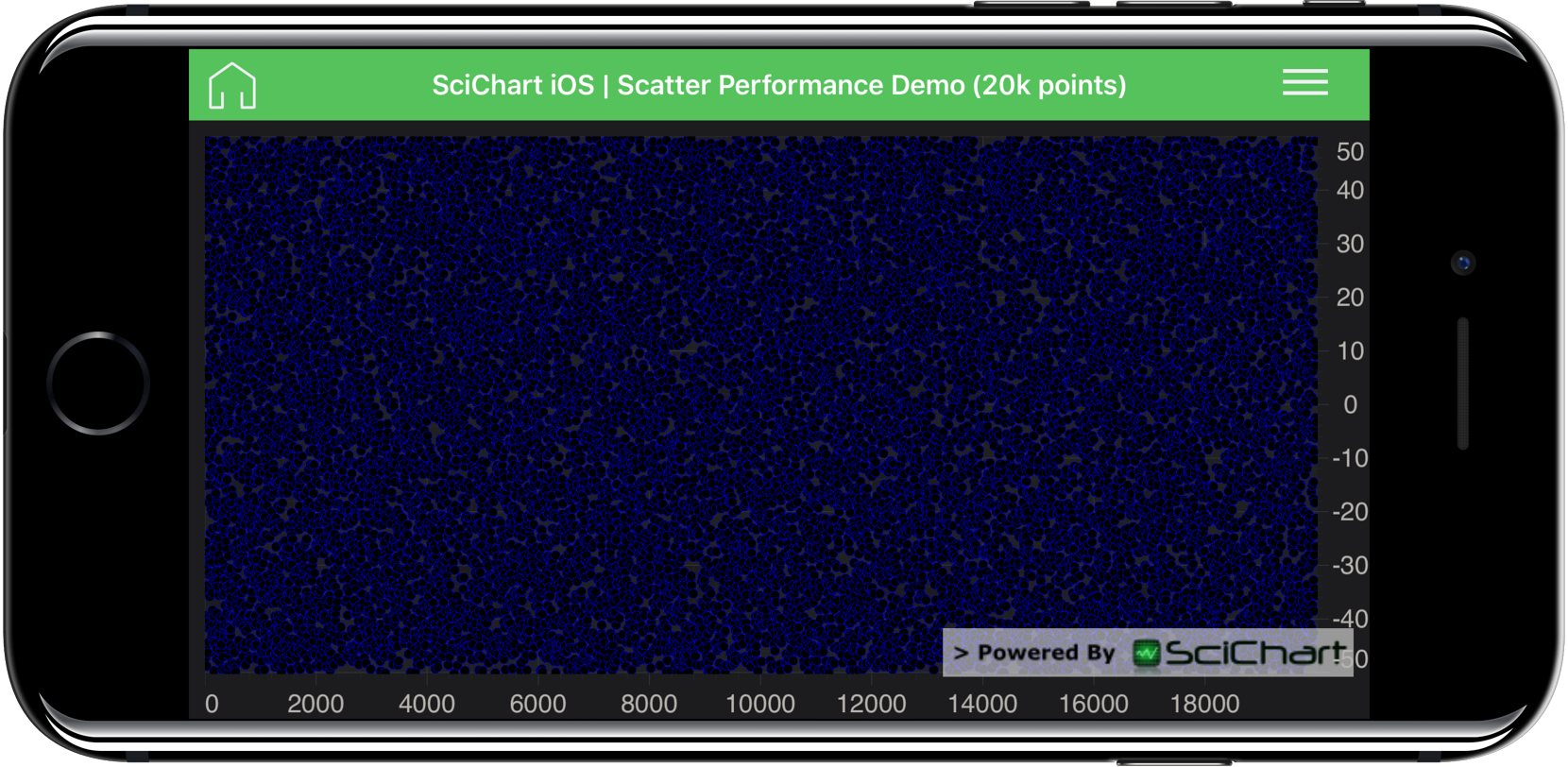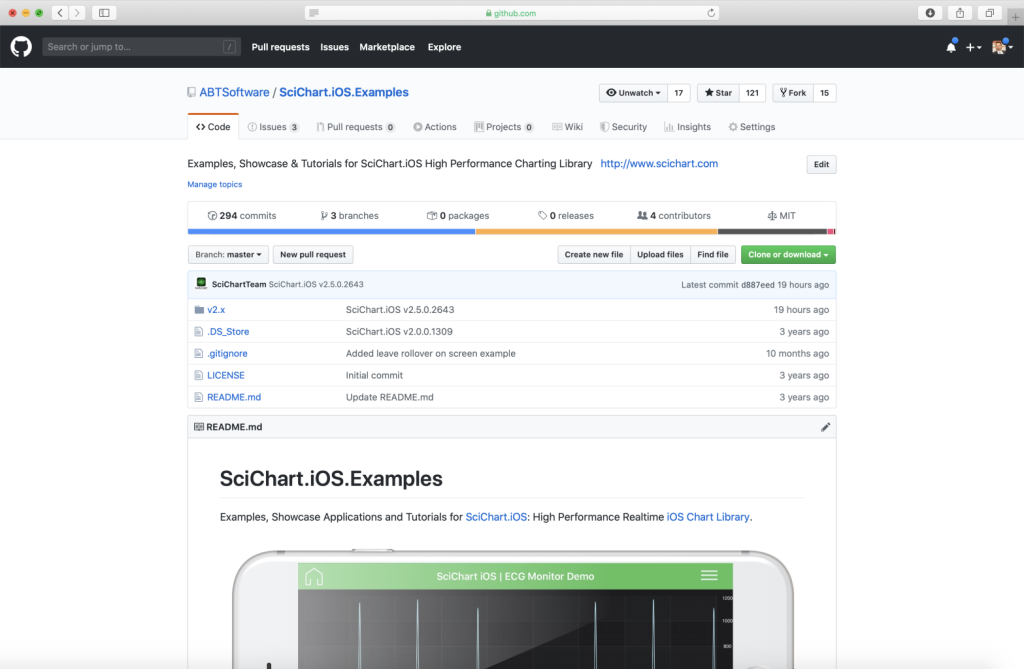iOS & macOS charts - Examples
Please note! These examples are new to SciChart iOS v4 release! SciChart’s OpenGL ES and Metal iOS and Metal macOS Chart library ships with hundred of Objective-C and Swift iOS & macOS Chart Examples which you can browse, play with and view the source-code. All of this is possible with the new and improved SciChart iOS Examples Suite and demo application for Mac, which ships as part of the SciChart SDK.
Demonstrates the speed and power of SciChart’s iOS Charts in a real-time. The high-performance is very important for charts used in Trading, Medical and Scientific applications and others. This example showcases loading or startup time of SciChart by appending 20 K points to a Scatter Chart and rendering in realtime. This can be done using SCIXyScatterRenderableSeries and
SCIXyDataSeries.
The Swift and Objective-C source code for the iOS and macOS Scatter Performance Demo (20k points) example is included below (Scroll down!).
Did you know that we have the source code for all our example available for free on Github?
Clone the SciChart.iOS.Examples from Github.
Also the SciChart iOS and Scichart macOS Trials contain the full source for the examples (link below).


